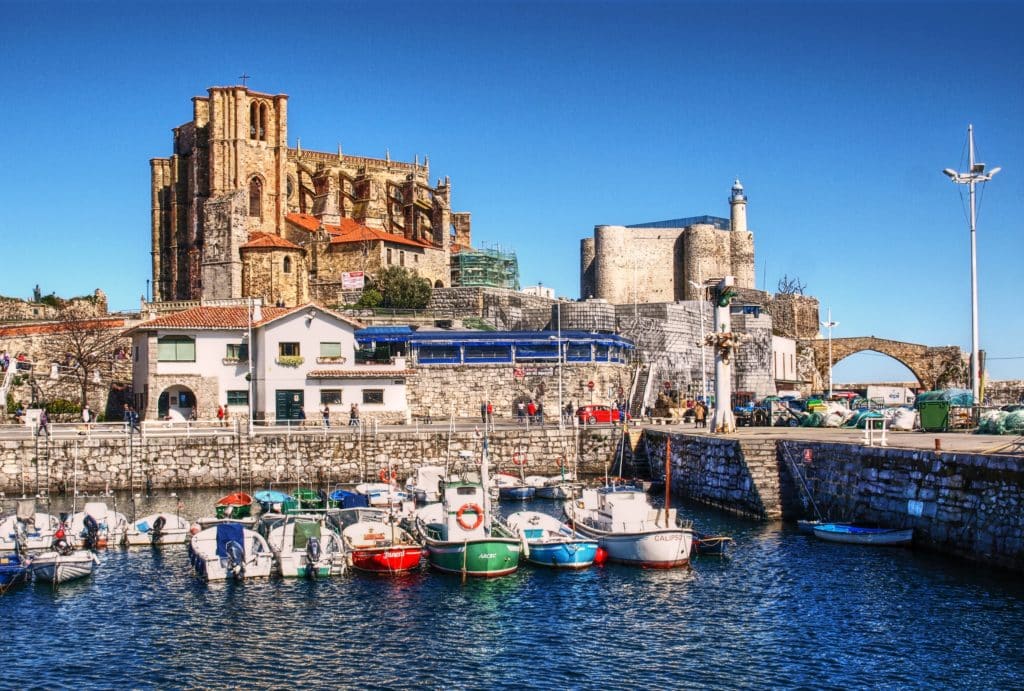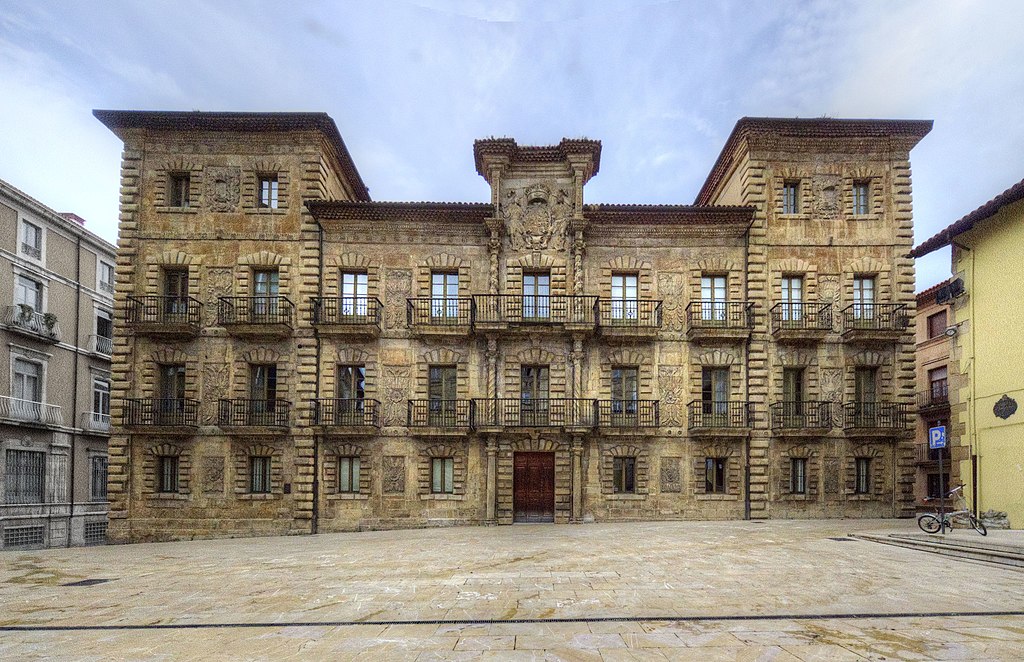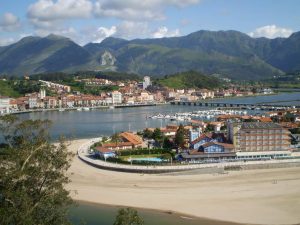Among all the existing Jacobean routes to do the Camino de Santiago, there will always be some that are a little more popular compared to the others, as is the case with the Northern Way.
Although it is one of the longest routes, we could also say that is one of the most impressive. This is thanks to the landscapes and monuments that we find there, making it the favorite of pilgrims from all over the world. If you want to do a shorter stretch and arrive in Santiago de Compostela in 7 days, we would recommend the Camino de Santiago organized from Sarria.
Índice de contenidos
These are the most important monuments of the Camino del Norte that you should not miss…
There are many points of interest in this Camino de Santiago with organized trip in the North of Spain that we could mention and it would take us a long time to tell you about all of them. However, among those who enjoy greater historical value and beauty at the architectural level, the following are worth noting:
HERMITAGE OF GUADALUPE
It is located in Fuenterrabía, considered one of the most beautiful towns in the entire Basque Country. We can consider that the Hermitage de Guadalupe is a good starting point to begin the route, or from the nearby and border town of Irún, which would be the natural start of the northern Camino de Santiago, and whose first section would be the Camino from Road from Irun to Bilbao.
Although the original construction does not have an exact date, it was already mentioned in 1.526 in a donation made to the town church by Juan Sebastián Elcano. Many years later it was demolished and raised again as a result of attacks and invasions.
The current hermitage dates from the XNUMXth century. It is a church with a single nave with a flat headwall and a single transept. One of its most striking elements is the stone capital from around 1860.
GUGGENHEIM
Without a doubt, it is one of the most important buildings on the Camino del Norte thanks to its architectural beauty. The Guggenheim of Bilbao, dedicated to contemporary art, was designed by Canadian-born architect Frank O. Gehry.
Although the negotiations for its construction began in 1991, it was not until 1997 when the works were finally concluded. It was inaugurated by King Juan Carlos I of Spain.
Its façade is one of the most characteristic and striking elements of the entire complex, where the twisted and curvy shapes. These were covered with curtains of glass, limestone and titanium plates. It has an area of 24.000 square meters, where about 11.000 are for exhibitions, distributed in 19 galleries.

BASILICA OF BEGOÑA
With a construction that took more than 100 years, Work began in 1511 and was completed in 1621. It was developed under a Gothic style, although during all the time of construction it was changing a little and adding details of other currents.
In 1835, the tower and almost all of its façade were destroyed, so it had to be intervened again. The current façade was completed in 1907.
The beautiful carving of the Virgin of Begoña stands out, made of polychrome wood, made at the beginning of the XNUMXth century. However, it has been restored several times. Other details that are worth enjoying are the main altarpiece, the Tabernacle area, which is made of stone; the choir organ and of course, all the canvases.
URDIALES CASTRO COMPLEX
Considered one of the most important monuments of the Camino del Norte, perfectly combines the best of ancient times with modernity, in the middle of buildings full of charm and beauty.
Here you will find the most important gothic-style church in all of Cantabria. In addition, you can also enjoy the beautiful medieval castle and the Town Hall, developed around the square.
The Santa María de la Asunción church, as we have already said, is of great importance. Its construction dates back to the XNUMXth century. It is developed with a basilica plan, flanked by two towers. While the Faro castle, next to the temple, is one of the few that are preserved in the region. It was the main defensive fort of the town in ancient times.

MAGDALENA PALACE
The Royal Palace of La Magdalena is one of the most important buildings on the Camino del Norte, as well as being protagonist in the whole region of Cantabria.
Although it does not have a defined architectural style, stands out for its impressive beauty. It combines French and English influences in its construction, as well as some typical elements of the mountain region.
It has an area of 28 hectares, crowned by beautiful gardens. Here it is possible to enjoy the ground, first and main floors, as well as the stables and the old assembly hall, now converted into an auditorium.
HERMITAGE OF SAN SALVADOR DE PRIESCA
Located in the town of Priesca, Asturias, it is considered one of the of the best expressions of pre-Romanesque architecture, typical of the region. According to ancient documents, this hermitage it was consecrated around the year 921, although not everything that is preserved today belongs to the original construction.
It has a basilica floor plan, with three naves that were topped by apsidal chapels. It was burned down during the Spanish Civil War, so since then it has received two restorations. However, these did not make major alterations to the original style.
HISTORICAL CENTER OF AVILÉS
Visiting this place is definitely time travel. Declared a Historic-Artistic Complex, it is one of the points of interest par excellence on the Camino del Norte. Wherever you want, you can enjoy precious historical legacies, so touring it is an enriching experience from any point of view.
Here stands out among other buildings, the Palace of the Marquis of Camposagrado. Its construction dates back to the XNUMXth century. On the other hand, the old Valdecarzana Palace It is the oldest in the entire city and one of the best exponents of Gothic architecture.
It is also possible to enjoy the Palacio de Balsera, the Palacio Valdés theater and picturesque and beautiful houses such as Eladio Muñiz, Arias de la Noceda or García Pumarino.

MONASTERY OF SAN SALVADOR, LOURENZÁ
Declared a National Historical Monument in 1974, the monastery of San Salvador was founded around 969, so it is an obligatory stop among the most important monuments of the Camino del Norte.
Despite its long history, the buildings that remain standing are from the mid-XNUMXth and XNUMXth centuries. The religious inhabited this area until the middle of the last century.
It is believed that the facade of the monastery could be the antecedent of the very Cathedral of Santiago, being the old abbey chamber the current seat of the Vilanova City Council.
In this enclosure are the remains of several personalities of the nobility.

CATHEDRAL OF MONDONEDO
Imposing and with a lot of history, its construction had its origin around 1219, even though Mondoñedo was the episcopal seat for 100 years before.
Its construction was quite slow, since it had to be interrupted several times, ending in the 1902th century. In XNUMX, it was declared National Monument. It has three naves, preserving the original Gothic rose window from the XNUMXth century.
SANTA MARIA MONASTERY, IN SOBRADO DOS MONXES
De mediaeval origin, is considered one of the main monasteries in the entire region of Galicia and one of the most important monuments on the Camino del Norte. It was founded in the year 952 by the count of Presaras, who died in this place years later.
The church that is part of the complex was built at the end of the 1708th century and finally consecrated in 1834. In 1950, the monastery was suppressed and all the assets were sold. In the middle of 1966 its recovery begins and since XNUMX it is once again inhabited by monks.









